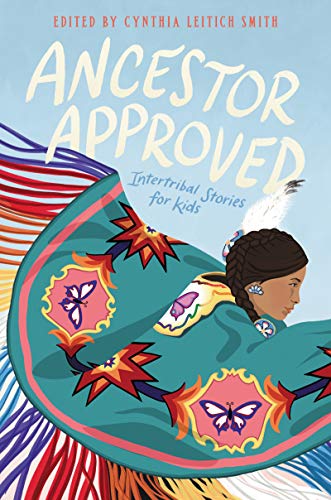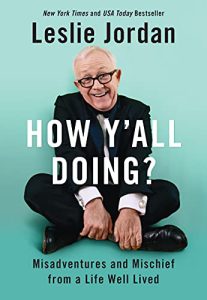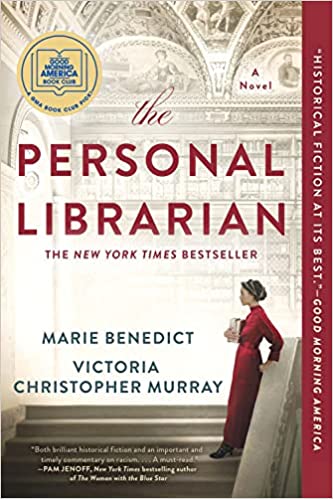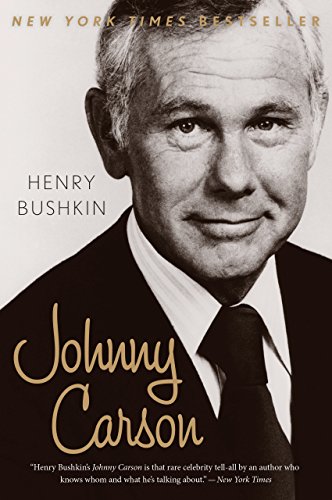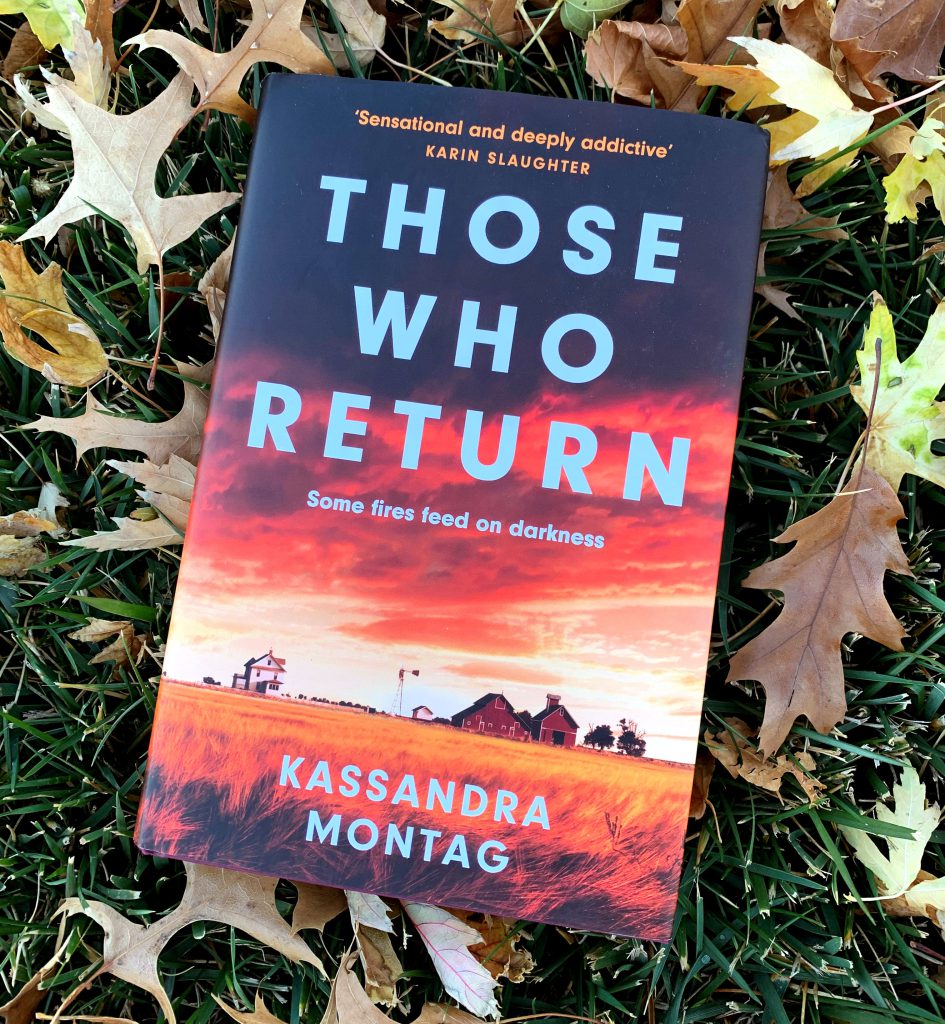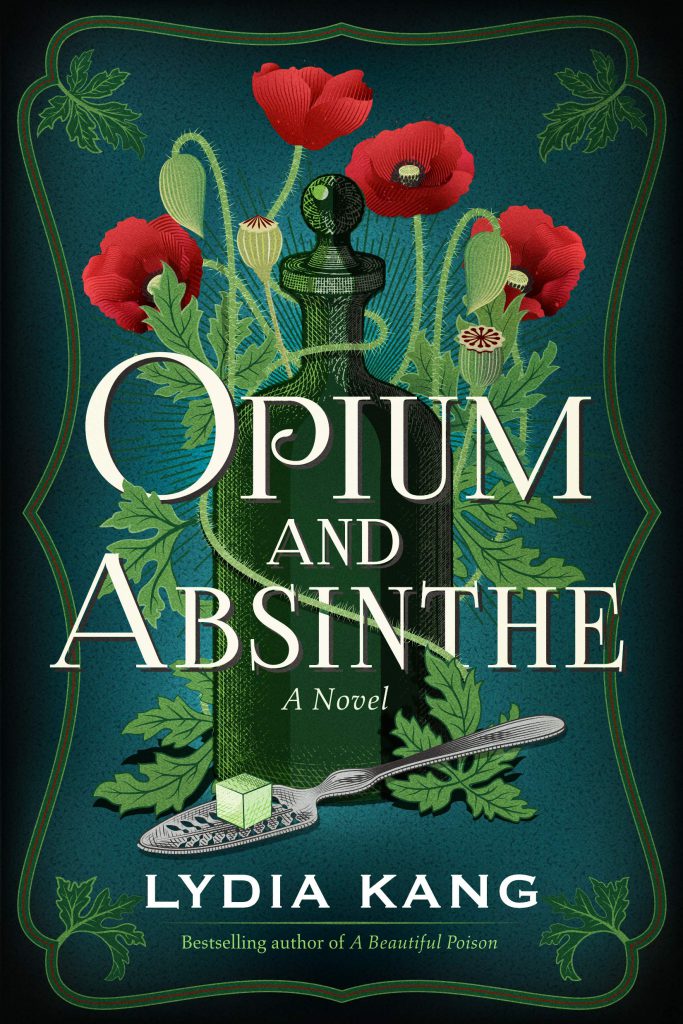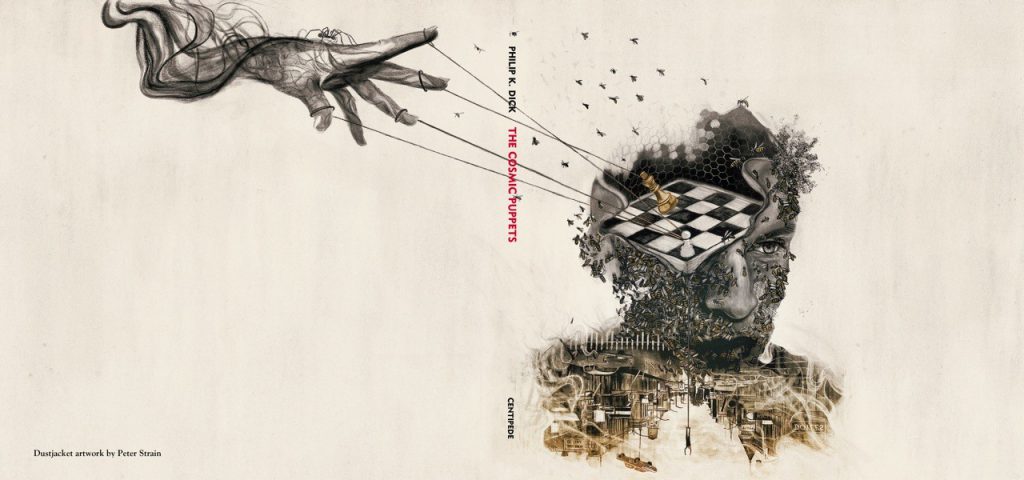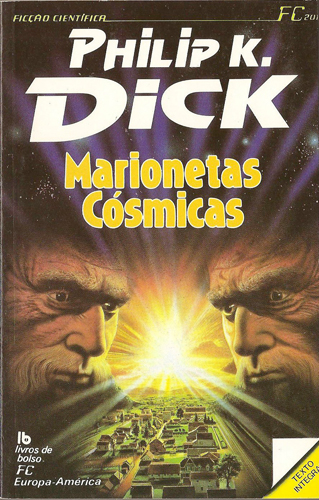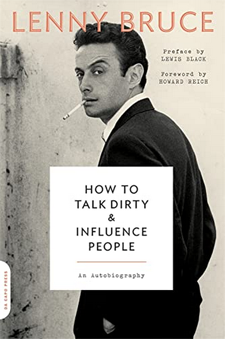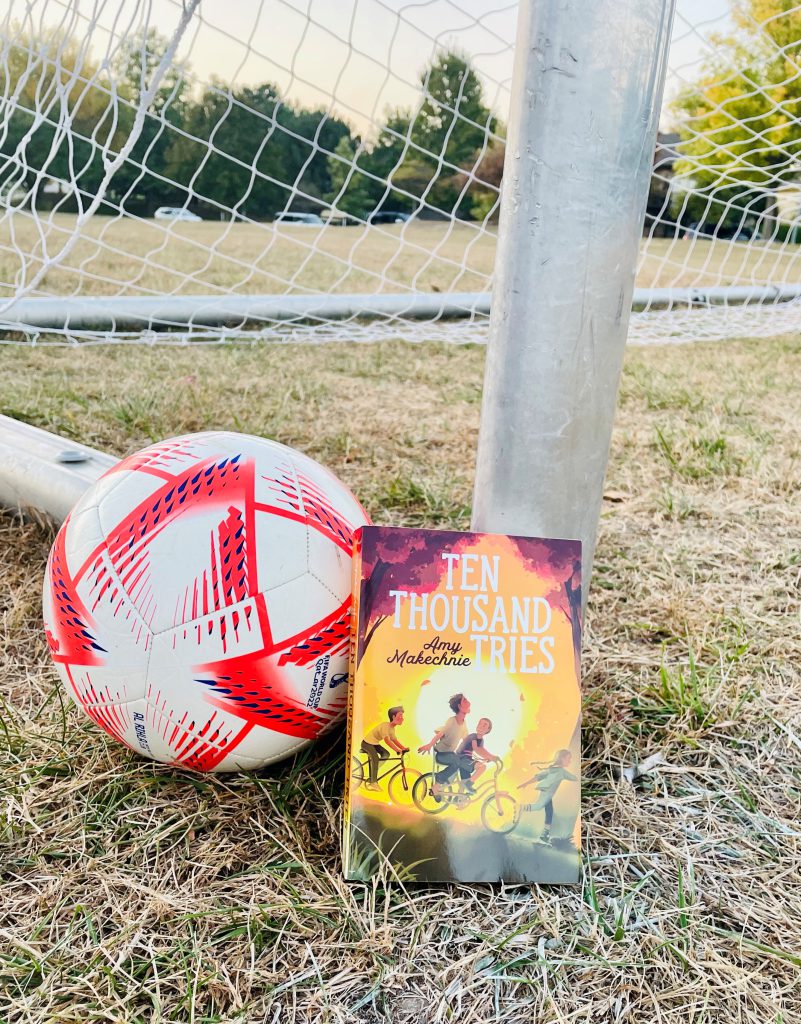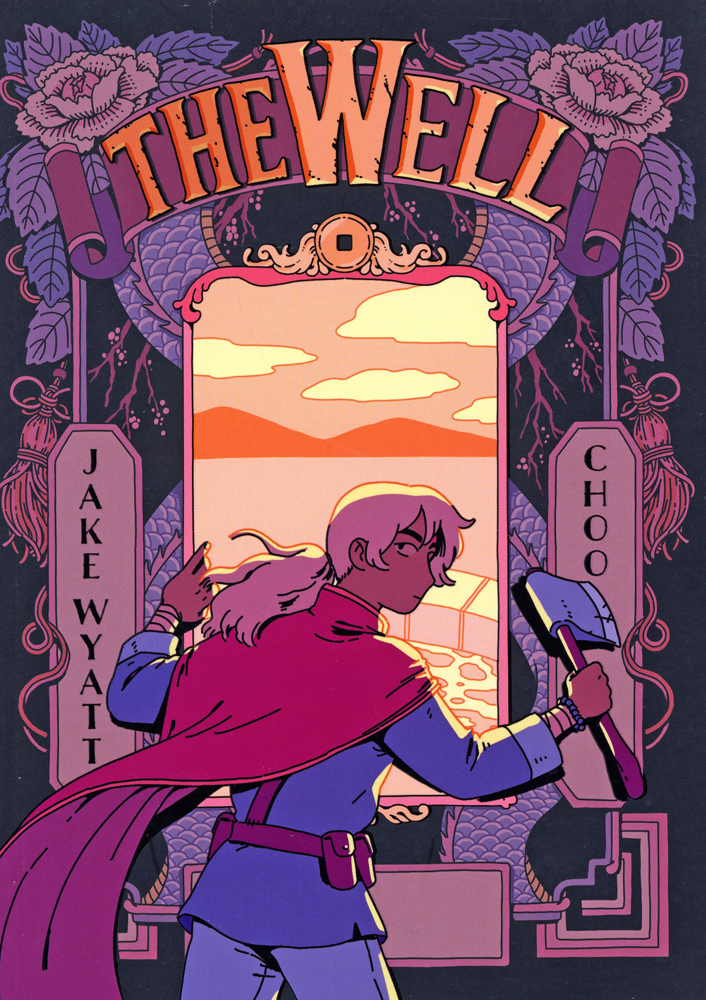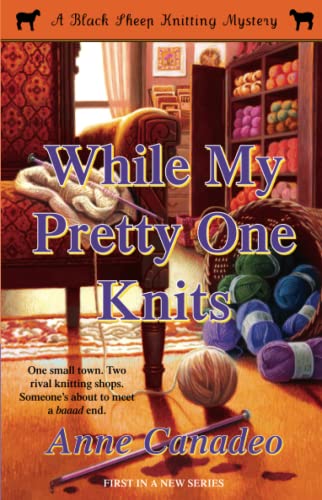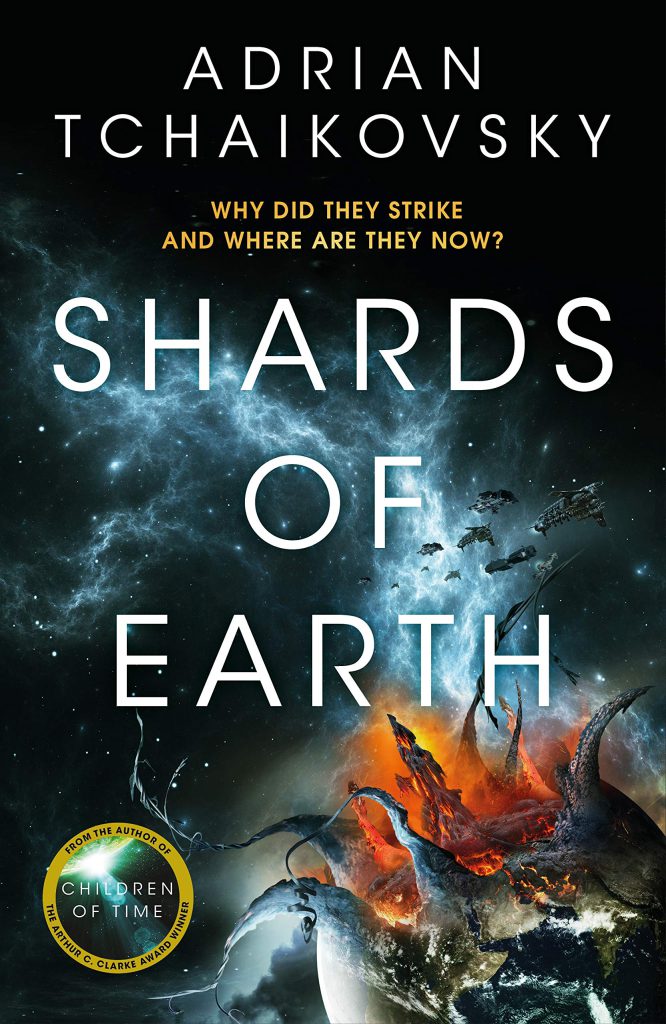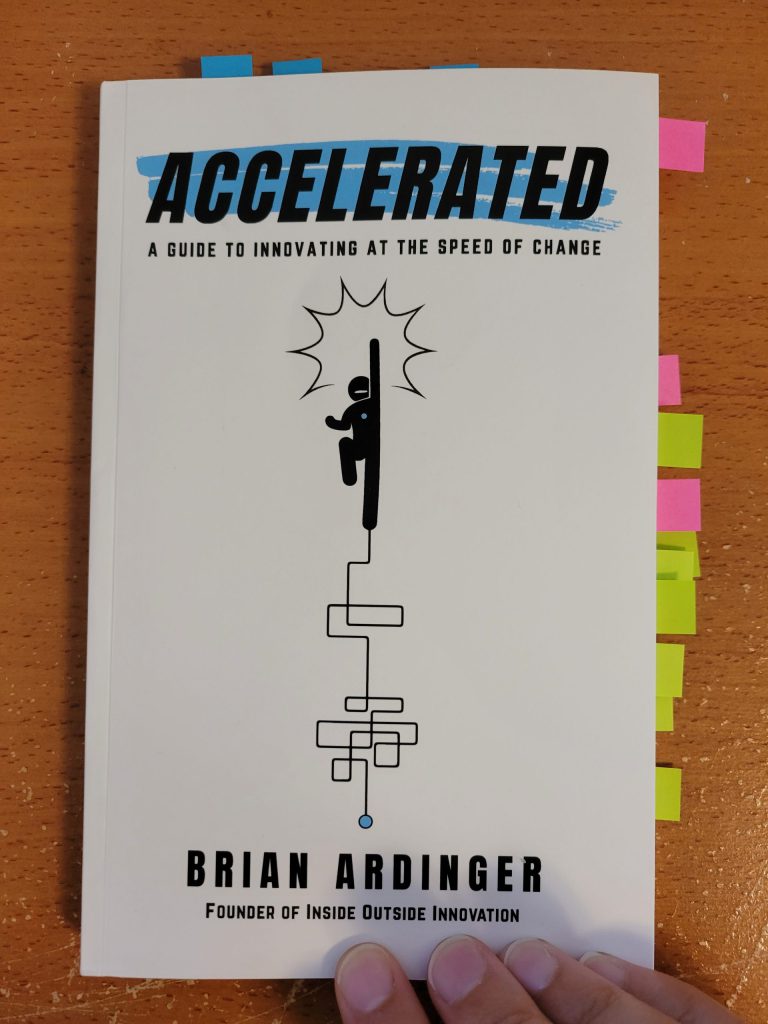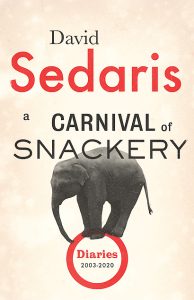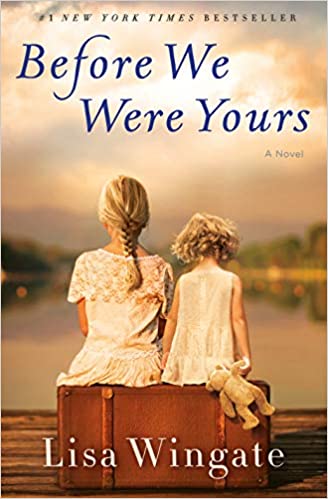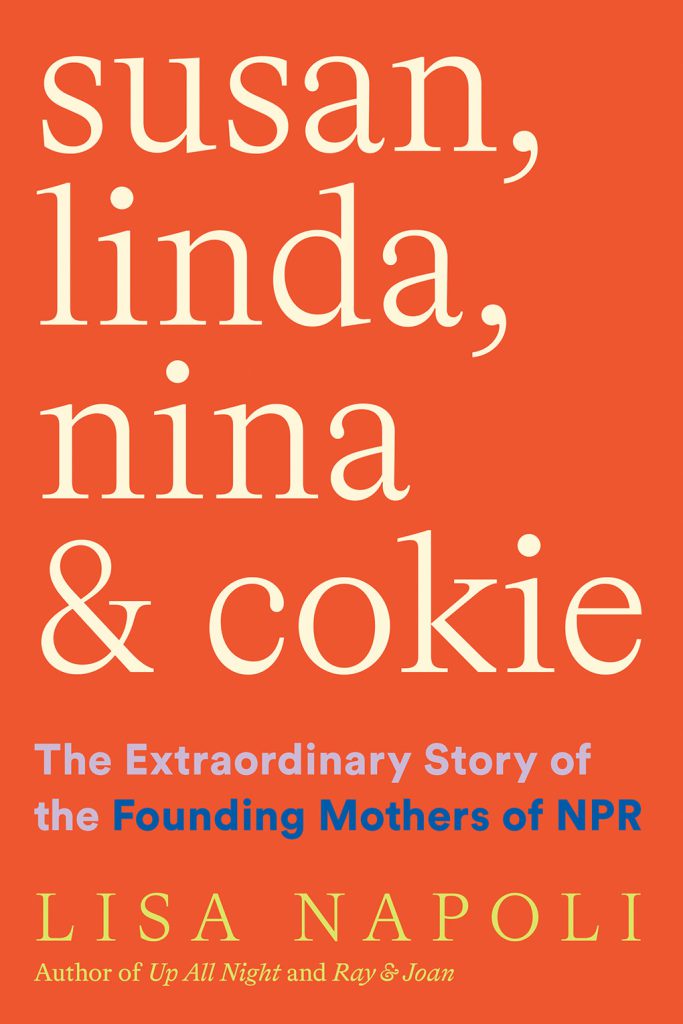Search the Blog
Categories
- Books & Reading
- Broadband Buzz
- Census
- Education & Training
- Friday Reads
- General
- Grants
- Information Resources
- Library Management
- Nebraska Center for the Book
- Nebraska Libraries on the Web
- Nebraska Memories
- Now hiring @ your library
- Preservation
- Pretty Sweet Tech
- Programming
- Public Library Boards of Trustees
- Public Relations
- Talking Book & Braille Service (TBBS)
- Technology
- Uncategorized
- What's Up Doc / Govdocs
- Youth Services
Archives
Subscribe
Tag Archives: Friday Reads
Friday Reads – Ancestor Approved: Intertribal Stories for Kids
This Christmas I hunted around for Native American stories for my niece and nephew. They are finally old enough to start asking questions about their culture and the color of grandpa’s skin. My dad is from the Band River Band of Chippewa at the very tip of Wisconsin. My brother and I are half Native, which makes my niece and nephew a quarter Native. We all tan pretty well.
To help the kids learn their heritage, I am reviewing Ancestor Approved: Intertribal Stories for Kids, edited by Cynthia Leitich Smith. Not surprisingly, I learned a lot from this collection of poems and short stories as well. In hindsight, I probably won’t give it to the kids until they are in middle school or at a higher reading level, but it was still a good read.
Many of the stories centered on Indian kids learning their culture through powwow celebrations and everyday life on the reservation, or elsewhere in the world. My brother and I didn’t grow up on the reservation like our dad did, but the stories still felt familiar and well-worn. I’ve been to many a powwow in my lifetime, but my niece and nephew have never seen one in person. Now they can learn the good, bad and ugly of Indian life from the safety of this book.
While some stories pass down traditional fancy dancing and our native languages, one of my favorite stories was told from the perspective of a reservation dog observing people in all their flawed and wonderful glory. If you’ve never heard of a reservation dog, nearly ever rez has got one. That dog that cannot and will not be owned by a single person. Rez dogs are cared for by and cares for all the people on the rez. Sort of like a library cat.
Even though some of these stories represent specific tribes, when you stack them all side-by-side, the similarities are unmistakable. Every language has a word for family, belonging, fear, loss, identity, and all those very human things. Having explored stories from around the world, all of our Ancestors must have all been talking to each other for a lifetime.
If you want to peer into the lives of dozens of Native cultures, try Ancestor Approved. Our history comes to life through story. These stories are real and refuse to be whitewashed.
Friday Reads: How Y’all Doing?: Misadventures and Mischief from a Life Well Lived, by Leslie Jordan
I listened to Leslie Jordan’s How Y’all Doing?: Misadventures and Mischief from a Life Well Lived, shortly after the 67-year-old actor’s October 24th death. Jordan was well known for his roles in “Will & Grace” and “American Horror Story,” but his profile shot through the roof during the pandemic. Stuck at home, he started making regular posts to Instagram to keep himself entertained. The posts were short and silly but obviously resonated, because before he knew it he had five and a half million followers and a book contract!
When describing his Instagram posting philosophy Jordan states: “On my Instagram page, I usually follow the old rule of not discussing politics and religion in company. I don’t know what I don’t know, and who would want to hear about what I don’t know? All I know is comedy and my sweet self.” And therein lies the appeal of listening to Jordan narrate the audiobook edition of How Y’all Doing? – it is a chance to spend four hours and 14 minutes in his sweet, hilarious company, listening to him tell stories in his delightful Tennessee accent.
Jordan writes about how much fun he’s had with Instagram, crediting the need to tell a story in around a minute with improving his comedic delivery: “Get to the point. Cut to the chase. No meandering around.” But he also celebrates the comedic freedom he experienced writing this book: “Who knew that writing for the printed page could send an artist soaring? To be able to tell not only the story but the backstory as well. And the story that led up to the backstory.”
Jordan’s memoir doesn’t have to be read in any particular order, since its chronology isn’t linear. Instead, most chapters are structured around a theme on which Jordan riffs, sharing stories from his life that are in some way related to that theme. In “The Bride Doll,” for instance, he talks about everything from the negative connotations attached to being a boy who loved playing with dolls, to being a man who, due to work he did in recovery programs, could walk into an American Girl doll store without shame and purchase one as a gift. “[I]t was a milestone moment,” Jordan writes. “Not one with trumpets blaring and angels singing, but a nice quiet realization that I had changed.”
It’s not until the chapter’s end that he tells the story of the bride doll he asked Santa to bring him back in 1958, when he was three. Initially, his father, “a man’s man” who died in 1967 when Jordan was 11, told his mother there was no way he was buying his son a bride doll. But on Christmas Eve, confronted with his son’s exuberant anticipation and unwilling to be the cause of his crushing disappointment the next morning, his father snuck out and procured one. “Thank you, Daddy. For having enough love for your son to buy him a doll,” Jordan writes in his conclusion. “And thank you, Don Norman [Jordan’s recovery advisor]. For helping me live a joyful, shame-free life.”
And that’s how most of the chapters unfold, including the final one, poignantly titled “”Until We Meet Again.” Jordan starts out reminiscing about the Florida vacations his family took each summer, and how bereft he felt when they ended: “It was then I realized how hard goodbyes can be.” He then pivots to the fact that even though the book is ending, it won’t really be the end because he has an endless supply of stories to tell. Knowing of his recent death, it was impossible not to choke up at his optimistic concluding words, which promise something that will now never come to pass:
So, to all my dear new friends, this is not goodbye forever. It is only goodbye for now. Goodbye till I get revved up and ready to launch into a whole bunch of new stories.
See you then.
Jordan, Leslie. How Y’all Doing?: Misadventures and Mischief from a Life Well Lived. Read by the author. Harperaudio, 2021. Audiobook, 4 hr., 14 min.
Friday Reads: The Personal Librarian
The Personal Librarian is a remarkable novel about J. P. Morgan’s personal librarian, Belle da Costa Greene, the Black American woman who was forced to hide her true identity and pass as White in order to leave a lasting legacy that enriched our nation, by New York Times bestselling authors Marie Benedict and Victoria Christopher Murray.
This book had my attention from the very first sentence, and I was so riveted that I listened to, and read, this book. The narrator of the Audible book, Robin Miles, is masterful as always. At the end of the audio book, the authors, Marie Benedict and Victoria Christopher Murray, each talked about the process of researching and writing this book, and how, as a result, they became close personal friends. This is a MUST read, so here is a little more about it:
In her twenties, Belle da Costa Greene is hired by J. P. Morgan to curate a collection of rare manuscripts, books, and artwork for his newly built Pierpont Morgan Library. Belle becomes a fixture in New York City society and one of the most powerful people in the art and book world, known for her impeccable taste and shrewd negotiating for critical works as she helps create a world-class collection.
But Belle has a secret, one she must protect at all costs. She was born not Belle da Costa Greene but Belle Marion Greener. She is the daughter of Richard Greener, the first Black graduate of Harvard and a well-known advocate for equality. Belle’s complexion isn’t dark because of her alleged Portuguese heritage that lets her pass as White—her complexion is dark because she is African American.
The Personal Librarian tells the story of an extraordinary woman, famous for her intellect, style, and wit, and shares the lengths she must go to—for the protection of her family and her legacy—to preserve her carefully crafted White identity in the racist world in which she lives. (Audible)
Friday Reads: Haven by Emma Donoghue
Before the pandemic, Emma Donoghue took a boat trip around Skellig Michael, an island off the Southwest coast of Ireland. Also known as Sceilg Mhichíl, the island became a UNESCO World Heritage site in 1996—but you might more likely know it from a little film called The Force Awakens, episode seven of the Star Wars franchise. Before Donoghue could actually set foot on the island on her second trip, travel restrictions went into effect, and she finished her research and wrote this book before visiting it again.
Haven is a fictionalized account of an early attempt to set up a monastery on the island. Three Irish monastics, who all had different paths to the religious life, set out on a boat from the Irish mainland around the year 600 to found a new holy order on the skellig. The island is both abundant and sparse, an allegory for the faith of the travelers. Donoghue goes into fascinating detail of the natural world of the island, especially the bird life, and fans of nature writing will appreciate this immersion into the physical world of the island. While the monks have different ideas about how to interact with the natural world, two of the monks, Cormac and Trian, have vowed to obey Artt, whose vision has brought them to the island. Artt’s faith, more educated and intellectual, is served well by a monastic life—but not by a natural life.
The struggle for survival, both physical and spiritual, is heart-wrenching and transformative. The narrative is both claustrophobic and expansive, which might sound like a familiar feeling to fans of Donoghue’s most famous work, Room. There are lessons for the characters, and so for the readers, about faith, about stewardship, about vulnerability and acceptance—as well as about which freedoms and responsibilities we embrace, and turn over, and perhaps wrestle back.
Here’s a fun article about how there are so many birds on the island, that when filming that Star Wars movie, it was easier to create a new monster to CGI over the birds: Porgs!
Donoghue Emma. Haven : A Novel. First ed. Little Brown and Company 2022.
#BookFaceFriday “Johnny Carson” by Henry Bushkin
Heeeeere’s #BookfaceFriday!

Ever wonder what the librarians at the Nebraska Library Commission do in their free time? When we aren’t ironing our cardigans or putting our grocery lists in alphabetical order (just kidding, I think?), we’re probably reading juicy celebrity biographies like this week’s BookFace selection, “Johnny Carson” by Henry Bushkin (Houghton Mifflin Harcourt, 2013). This title is also the subject of this week’s Friday Reads post, written by Information Services Director, Lisa Kelly. Library Commission staff take turns writing weekly book reviews of titles they have enjoyed (and sometimes not!) in our weekly Friday Reads series. Want to read it yourself? “Johnny Carson” is available as an ebook on Nebraska Overdrive Libraries!
“Henry Bushkin’s ‘Johnny Carson’ is that rare celebrity tell-all by an author who knows whom and what he’s talking about.”
— The New York Times
Find this title and many more through Nebraska OverDrive! Libraries participating in the Nebraska OverDrive Libraries Group currently have access to a shared and growing collection of digital downloadable audiobooks and eBooks. 189 libraries across the state share the Nebraska OverDrive collection of 21,696 audiobooks, 35,200 eBooks, and 3,964 magazines. As an added bonus it includes 130 podcasts that are always available with simultaneous use (SU), as well as SU ebooks and audiobook titles that publishers have made available for a limited time. If you’re a part of it, let your users know about this great title, and if you’re not a member yet, find more information about participating in Nebraska Overdrive Libraries!
Love this #BookFace & reading? Check out our past #BookFaceFriday photos on the Nebraska Library Commission’s Facebook page!
Posted in Books & Reading, General
Tagged Biography, bookfacefriday, Ebook, Friday Reads, Henry Bushkin, Johnny Carson, Nebraska OverDrive Libraries, OverDrive, Reading
Leave a comment
Friday Reads: Johnny Carson and Kate Remembered
When I shelved books at Beatrice Public Library, we had a separate room for biographies and all of our comfortable chairs were located there. I always wondered about the patrons that found the lives of others so fascinating, and now, I realize that person is me. Is it just one-step away from reading People magazine at your dentist office or is it something more? Since I have started reading biographies, they have become one of my favorite genres. Here are two biographies I read this summer:
Johnny Carson by Henry Bushkin
I grew up with Johnny Carson reliably making us laugh at the end of the day until his last broadcast in May of 1992 when Bette Midler serenaded him with One More For My Baby. The author is described as Johnny’s “personal legal adviser, fixer, confidant, and close friend.” Carson referred to Bushkin as his best friend. The book covers their 18-year relationship, which began when the author was 27 years old in 1970. Had the relationship not ended abruptly or acrimoniously, I wonder if Bushkin would have written this book? The author reveals Johnny’s copious generosity, his inability to be a good husband or money manager, and the psychological damage inflicted on him by his mother from which he never recovered. His mercurial temperament and his grudges were legend. This book pulled back the curtain on an icon that I would have rather left alone but through the eyes of Bushkin, I felt I got closer to the truth or at least one version of it. Despite it all, nobody hosted a show quite like Johnny and watching old clips of him still brings a smile to my face.
Kate Remembered by A. Scott Berg
I listened to Kate Remembered shortly after it was published in 2003. After I gave copies to my neighbor Mary and to my friend Vern, I thought it was time to have another listen. Incidentally, the book is narrated by the actor Tony Goldwyn who does a fair Hepburn impression. The book focuses on Berg’s friendship with Hepburn that started in 1983 and lasted until her death. Berg was Kate’s chronicler as she lavished stories upon him from her life and some episodes that I suspect she rarely shared. From the author’s book cover, “… Miss Hepburn often used our time together to reflect, an exercise in which I don’t think she indulged with anybody else.” I found Scott’s speculative answer to Kate’s question on why he thought Tracy drank so much fascinating and likely spot on. Learning about Kate through Scott’s writing, and what I hope were direct quotes of Hepburn’s, was worth a first and a second visit. After I finished, I re watched The Philadelphia Story and Guess Who’s Coming to Dinner again. Time well spent.
So what is the appeal of biographies? Because there is always more to someone’s life is than meets the eye. Triumphs and tragedies are a human condition no matter your fame or infamy. We are all broken.
Bushkin, Henry. Johnny Carson. Boston, MA; Houghton Mifflin Harcourt, 2013.
Berg, A. Scott. Kate Remembered. New York, NY. Putnam Adult, 2003.
Friday Reads: “Those Who Return” by Kassandra Montag
Set in the Sandhills of Nebraska, this mystery centers around a children’s home for troubled youths and a psychologist who is trying to start a new life. Isolated and far off the beaten path, Hatchery House, is a treatment facility for orphaned children with psychiatric disorders. Lore Webber has left a job with the FBI in Omaha and moved out west to start over, but when one of her patients at Hatchery House is found murdered her old life and her new life will collide. This closed-door murder thriller will have readers guessing until the very end. The inherent remoteness of the setting has limited the suspect pool, and no one wants to think the people they live with are capable of murder. The beautifully written descriptions of the setting honor the unique beauty and seclusion of the Sandhills. Too many people who comment on the Nebraska landscape have only ever driven through on I80, it was good to read a book that looked deeper. The characters are complex and well-written, with interesting backstories that unfold throughout the story as you work alongside Lore to solve the crime. Thoroughly well-researched and compelling, this is Montag’s second novel, her first “After the Flood” was published in 2019, and is also a favorite read of mine. I would highly recommend both.
Montag, Kassandra. Those Who Return. Quercus. 2022.
Posted in Books & Reading, General
Tagged Book Review, Friday Reads, Kassandra Montag, mystery, Reading, series, Those Who Return
Leave a comment
Friday Reads: Opium and Absinthe by Lydia Kang
It seemed good timing to read Lydia Kang’s Opium and Absinthe soon before Halloween. The vampire connection was enticing. The historical novel takes place in New York City in 1899, the year that Bram Stoker’s Dracula was published. Lucy Pembroke is found dead in an alleyway by puncture wound and drained of blood on the eve of her marriage ceremony. Mathilda (Tillie) Pembroke is Lucy’s younger sister. Tillie is determined to find the murderer. An overprotective mother and a controlling grandmother hamper her efforts. Tillie must go to imaginative and extreme lengths to escape the confines of her home to seek answers to her many questions about the murder.
Tillie’s challenges include an opium and morphine addiction that came about following a horse-riding accident. Intended to provide pain relief, addiction followed and continued. Opium and Absinthe places drug addiction as a central theme. Heroin is also notable, introduced by Bayer as a cough remedy. At the time, all were legal and commonly prescribed.
An intriguing mix of characters emerge including New York’s rich and privileged and the working class poor. The Pembroke family is among the city’s elite. The mystery unfolds at a steady pace and, at least for me, comes to a surprising end.
The book is included among CrimeReads Best Historical Fiction of 2020.
Described as among the great virtuosos of the crime genre, Lydia Kang is an author and an internal medicine physician. Her writings include historical mysteries, popular history, young adult sci fi, essays and poetry. Kang’s most recent book, Patient Zero: A Curious History of the World’s Worst Diseases, co-authored with Nate Pedersen, is a 2022 Nebraska Book Award winner for nonfiction – popular history. Kang’s The November Girl won the Nebraska Book Award for Young Adult Fiction in 2018.
Kang, Lydia. Opium and Absinthe: A Novel. Seattle: Lake Union Publishing. 2020
Friday Reads: The Cosmic Puppets, by Philip K. Dick
Ted Barton has a problem. He doesn’t exist. When he visits his old hometown, the one he left eighteen years ago, he recognizes nothing. When he visits the town newspaper and checks into their archives, he discovers his name in the obituaries: funny, he doesn’t feel like he died of scarlet fever eighteen years ago. Something is Going On, and Ted Barton is going to hang around town for the length of an expanded novella until he finds out just what that Something is.
So begins the spaced-out mystery horror of 1957’s The Cosmic Puppets, which takes a Twilight Zone-style jumpstart of one individual’s profound alienation from history and memory, and builds from there, until the whole town, then the whole universe, is involved — and the nature of reality itself is called into question. In other words, just another book by Philip K. “for now we see through a glass, darkly” Dick (1928 – 1982), the fictionalizing philosopher whose works are the source for such movies and series as Blade Runner, The Man in the High Castle, A Scanner Darkly, Total Recall, and several others.
It turns out that the town Ted Barton vividly remembers – Millgate, Virginia – is still there, but on top of it lies the consistently projected illusion that he and the rest of the townspeople currently perceive. Through strenuously concentrating on his memories, he can bring back small details temporarily, but he can’t hoist up the real town alone: it’s a mass delusion that must be countered with a collective effort of memory.
Alliances are formed and sides taken, snakes and spiders fight with bees and moths, and primordial forces that predate the physical universe rise and join the psychic tug of war. Dick wrote most of this book in 1953, making it one of his first efforts, but PKD fans will notice that many of the classic preoccupations he explored in later books and writings — such as the 1978 speech “How to Build a Universe That Doesn’t Fall Apart Two Days Later” — are already in place, especially the old philosophical question, “what is real?
A warning to puppet enthusiasts and ventriloquists: puppets do not play a role in the story, except perhaps metaphorically; the original title of The Cosmic Puppets was A Glass of Darkness. This title is available through hoopla Digital via your local library (I read mine through Lincoln City Libraries) and also the Internet Archive, as well as well-curated used bookstores everywhere.
Dick, Philip K. The Cosmic Puppets. Boston: Mariner Books, 2012.
Top image: Cover of Centipede Press edition, 2020
Friday Reads: How to Talk Dirty and Influence People
“All great truths begin as blasphemies.”
–George Bernard Shaw
“Powerful people and popular ideas don’t need First Amendment protections; marginalized people and unpopular ideas do.”
–Nadine Strossen, former ACLU president (1991-2008), Senior Fellow, FIRE
During a time where free speech assaults are now taking place on behalf of both the political right and the left (nothing new to see here, folks), it’s interesting to take a look at this classic autobiography from Lenny Bruce. How to Talk Dirty & Influence People is a take on Dale Carnegie’s How to Win Friends & Influence People, and describes the life of Bruce from his childhood up to the time of his premature death at the age of 40. Born in Mineola, NY, Bruce’s parents divorced when he was 10, and during his childhood he spent time living and working on a farm in Wantagh, NY. Bruce joined the Navy at the age of 16 in 1942, serving in WW2. After appearing in drag for a comedy bit, he convinced his CO that he had homosexual urges and received an honorable discharge. The Max Klinger character from M*A*S*H was based on Bruce. After discharge, he went on to develop his stream of consciousness comedy routines and worked as an MC in Jazz clubs. His routines often focused on themes of race relations, organized religion, and criticism of “the establishment”. Certainly, in today’s world, most of his bits would offend damn near everyone, and there likely would be numerous calls to ban or censor him. This in fact was the case with Brandeis University, which now hosts Bruce’s audio files. Brandeis University is named after former Supreme Court Justice Louis Brandeis, champion of free speech and advocate of counter speech:
“If there be time to expose through discussion, the falsehoods and fallacies, to avert the evil by the processes of education, the remedy to be applied is more speech, not enforced silence.”
This notion seems to be forgotten or kicked to the curb in today’s world. After the audio files came in the possession of Brandeis University, Michael Weller, former graduate of Brandeis and playwright, wrote a play based on Bruce’s work, examining the ideas of free speech. Outrage over the content of the play quickly ensued, and the University promptly cancelled it. Oh, the irony. College campuses are now replete with multiple trigger warnings on practically everything, self-censorship among students for fear of repercussions, and frequent disruptions and outbursts directed at speakers who are disagreeable. They are no longer the bastions of free speech, thought, healthy debate, and exchange of ideas they once were. As Penn Jillette says:
“If college is so comfortable and safe — I’m glad I’m not there. Who wants comfortable? Who wants safe? This old piece of carny trash still wants to be pushed and challenged, and I’ve proved I can do that without college. And it’s a lot cheaper than Brandeis.”
How to Talk Dirty and Influence People also describes Bruce’s marriage to burlesque dancer Honey Harlow, and the two obscenity trials that ultimately broke him (physically, emotionally, and financially). Plagued by legal troubles relating to his drug use and financial scams (he dressed as a priest and solicited donations for a “leper colony in British Guyana”), he was ultimately charged with obscenity in (of all places) San Francisco (acquitted), Chicago (convicted but later overturned by the Illinois Supreme Court), and New York (convicted but later overturned by the New York Court of Appeals). Bruce died while the NY appeal was in process.
The book is an interesting incursion into Bruce’s life, and while the title mentions talking dirty, there’s not much of it in this book. A few tidbits of his routines and trials, but it’s mostly about his life and not his comedy acts.
Bruce, Lenny. How to Talk Dirty and Influence People: An Autobiography. Da Capo Press, Reprint edition. 2016.
Friday Reads: Ten Thousand Tries by Amy Makechnie
The other players on the team looked at me funny when I borrowed a ball to take this photo at the end of their practice, but my kid just rolled his eyes and smiled. “Yeah, my mom does stuff like this all the time.” Being a a recurring #BookfaceFriday model has jaded him to the weird things I do with book covers. (He’s even better at lining up the shot than I am now.)
This book is also about a boy whose parents spend a lot of time with him on the soccer field. Golden Maroni’s dad was a pro soccer player, and now coaches the local high school team. His mom coaches Golden’s middle school team – she’s referred to as Coach or Mom depending on the chapter’s setting.
The title refers to Malcolm Gladwell’s assertion in his book “Outliers” that it takes 10,000 hours to achieve mastery of a skill. While Amy Makechnie specifies in her end-of-book acknowledgements that this rule doesn’t apply to sports, our hero Golden is sure that 10,000 hours of soccer practice will make him as phenomenal as his idol Lionel Messi. But off the field, things aren’t going as well.
Lucy, his team co-captain and best friend (and maybe more?), will move soon if Golden can’t drive away her annoying future stepfather. His older sister Jaimes certainly needs another 10,000 hours of driving practice before Golden feels safe riding with her. And worst of all, a year and a half after a surprising diagnosis, Golden’s dad is losing his battle with ALS; no amount of positive thinking and hard work can stop the progression of this terrible disease. It feels like Golden’s whole world is crashing down around him. The Maroni family motto is “We do hard things.” They work hard, play hard, and never give up on each other. But this year will be different, and Golden must learn that letting go isn’t the same as giving up.
This book was chosen as one of the 10 nominees that young adults across the state will read and vote on for the 2023-24 Golden Sower Novel Award next school year.
Makechnie, Amy. Ten Thousand Tries, New York, New York : Simon & Schuster, 2021.
Posted in Books & Reading, General
Tagged Amy Makechnie, books, Friday Reads, Juvenile literature, Reading, realistic fiction, sports fiction, YA, Young Adult
Leave a comment
Friday Reads: Star Wars: Women of the Galaxy
Who is your favorite woman in the Star Wars universe? You may find her in this wonderful character guide, Star Wars: Women of the Galaxy, written by Amy Ratcliffe and illustrated by a group of incredibly talented female and non-binary artists.
“They are heroes and villains, Sith and Jedi, senators and scoundrels, mothers, mercenaries, artists, pilots….”
This oversized coffee table book tells the stories of 75 female characters from “films, fiction, comics, animation, and games”. Some of the profiles are your typical fictional character biography and others include background information about how the characters were envisioned and created. As a contributor to StarWars.com and Star Wars Insider, Ratcliffe has insider knowledge and shares details about these women that you may have never heard before.
The artwork is beautiful and in varying styles. There are over 100 illustrations from 18 amazing artists, such as comic book artists Annie Wu and Elsa Charretier, Lucasfilm artist Amy Beth Christenson, freelanceers Eli Baumgartner and Viv Tanner, and one of my favorite geeky artists, Karen Hallion.
You will find many characters you recognize as well as lesser known women (and droids!), but all of them make Star Wars a vibrant and inspiring place. I have been a huge Star Wars fan from the very beginning. Yes, I saw Star Wars in the theater in 1977. But the franchise has expanded so much since then, even I learned about many female characters I had never heard of, mostly from all of the novels and comics. Which has made my need-to-read list even longer!
Who is my favorite woman of Star Wars? I can’t pick just one. My first choice of course is Princess Leia, more recently Ahsoka, R2-KT, and Doctor Aphra. And of course, as the Chief Librarian of the Jedi Archives, Jocasta Nu holds a special place in my heart.
Finally, as the first woman of the Star Wars galaxy, the simple dedication For Carrie Fisher is perfect.
Friday Reads: The Well by Jake Wyatt
What would you wish for?
The Well is a full color graphic novel published for high school readers. Li-Zhen, called Lizzy, lives with her grandfather and for the first time she will travel to town by herself with some goats to sell, riding in a sailboat in which her friend Eli now rows. While in town, she snitches some coins from a sacred fountain to pay for her return trip. After returning home she is visited that night in her sleep. The well demands repayment, not in coins but in wishes. Lizzy must find a way to provide what has been wished for, or she will be drowned. The well’s servant says it is the wishes connected to each of the three coins that are valuable, not the coins. She has to talk friends and strangers into helping her and she only has a day to accomplish each task. Each task is different, and the last task may kill her.
One of the things that appealed to me about this book is the care put into wishing. Little children wish for candy or toys, they said, but wishing should be more thoughtful. Eli tells Lizzy that her mother explained it this way: “…first you’re supposed to think about what you have, what you are grateful for. Then think about what you want out of life.”
For the first task she asks for help from Eli, and they end up kidnapping a woman who has wished to return to her island, but now no longer wants to go there. The island was destroyed by the leviathan. The well doesn’t care about current wants or changes in wishes. It wants her to give what was wished for on the stolen coin, however long ago the wish was made.
This past summer I saw the movie “Three Thousand Years of Longing” with Idris Elba playing a genie. Wishes are a big part of his existence. That movie and this graphic novel made me think more about wishes. Fairy tales often have wishes involved, almost always tricking the wisher. I liked what Eli said in the book about wishing. It can be done too quickly with little contemplation as to the likely result of the wish. Maybe wishes should stay in our hearts and not be spoken out loud.
(The Nebraska Library Commission receives free copies of children’s and young adult books for review from a number of publishers. After review, the books are distributed free, via the Regional Library Systems, to Nebraska school and public libraries.)
Wyatt, Jake. The Well. First Second, 2022.
Friday Reads: While My Pretty One Knits by Anne Canadeo
There is nothing like a good mystery.
While My Pretty One Knits is not exactly what I would call a good mystery. The murderer’s identity was obvious before the close of the first chapter. The village of Plum Harbor unequivocally fails to process – or even react much to — the brutal murder of one of their fellow villagers (it was brutal! And, as the book itself repeatedly reminds us, it was bloody!). There are enough knitting inaccuracies that unravel long enough to purl a swoncho. The knitting group doesn’t so much solve a murder so much as they stumble around talking about the murder, and incidentally and coincidentally facilitate the solving of the crime. And, as my fiancée put it with nothing but fondness, our dear anxious protagonist Lucy is “a bit touched in the head.”
Yet I finished the book feeling…well, cozy.
There were no high stakes (ignoring the fact that, had the murder gone unsolved, a cold-blooded killer would have gotten off scot-free). There was a dog (who did more work to solve the case than her human caretaker). There was knitting and humor. It was the cross between Hallmark and Lifetime that I’ve been seeking, even if the needles pointed more towards Hallmark. And it was, simply, fun.
Our core cast of characters include Maggie, the shop owner; Lucy, the newly divorced graphic designer; Dana, the psychologist; Suzanne, the real estate agent and mother; and Phoebe, the college student. There are many more characters, which helps the village feel populated, although in audiobook format it was difficult to keep everyone straight, and I eventually stopped trying. Familiarity will hopefully come with time.
I don’t hold out much hope that, as I continue the series, the ridiculously high statistics for murder per capita in Plum Harbor will be cause for concern. Luckily, the group has Suzanne. When the population dips down too low to support the village economy, they’ll have a head start on packing up and moving out.
I am, however, optimistic that the knitters of The Black Sheep will learn and change and grow. That’s what I’m interested in. And, I realize, as I frog back my snobbery; that’s what all cozy mystery aficionados are interested in. That’s what the writer is interested in. It was never about the mystery — it was about the characters.
And isn’t that warmer than a wool sweater?
Canadeo, Anne. While My Pretty One Knits. Pocket Books, 2009.
Friday Reads: Shards of Earth, by Adrian Tchaikovsky
Shards of Earth, by Adrian Tchaikovsky, is science fiction, by a British science fiction and fantasy master. The characters are engaging, human, (and intriguing when not human.) The idea of an alien which is moon sized that can travel faster than light, each a single being, called the Architects, is remarkable. That it’s an absolute killing machine pointed at all inhabited worlds pulls the fractured colonies of Earth and all the known aliens into war against it. The story is not about the war as much as about the final secret weapon that made victory possible. And what happens to that weapon after the war. This only makes sense in that the weapons that win the war are called Intermediaries (Ints), and are humans, medically and chemically modified to be able to mentally contact the Architects. Idris Telemmier is one of the few remaining original class of Intermediaries. He is a war hero. Due to his modifications, he hasn’t aged since the end of the war fifty years ago. Intermediaries can contact Architects, and they can pilot deep space craft through unspace, without having to sleep during the process.
Unspace, unlike some forms of faster than light travel, must be experienced by most sentient beings asleep. If they are awake, they are immediately isolated from other travelers on the ship in unspace. Not only of being alone, but also of being alone with a hostile, unspeakable being that they can’t see, only sense. Most ships travel old routes mechanically, with the pilot being the first to wake, but Intermediary pilots go through unspace awake. They can plot new paths to objects, making Idris especially valuable to his crew on the Vulture God, a salvage ship.
An old war acquaintance of his, Myrmidon Solace, is tasked with contacting Idris on the ship he currently pilots. Solace is from a genetically engineered, and vat grown race of human women warriors who live on their ships, and they are known as the Parthenon. They do not have Intermediaries. Hugh (Council of Human Interests), the governing body of the colonies controls the program, and licenses them. Hugh won’t license any to the Parthenon in the post war era.
Making Intermediaries is an uncertain business. Idris, being first generation, is even more unusual, since he hasn’t aged, and can’t sleep. He’s one of two or three surviving from that first generation. He’s content to work on the salvage ship. The trouble starts with a shore leave where a rich man decides to confiscate him, since later Ints are licensed and conditioned with a “leash” contract (making them more like property.). That doesn’t pertain to Idris. His crew, with Solace, manage to get him off planet, but the job they pick up next only multiplies their troubles—it’s a modern salvage that has the distinctive, destructive design of an Architect kill. Except the war ended fifty years ago, with the disappearance of the Architects, and no one has seen one since.
While some reviewers compare the story to Star Wars and Star Trek, there is a lot more here, and a far more patched up universe. The characters are interesting, the main ones are three-dimensional, and the world building is complex, with more than one political system. One of the characters is Oliana (Olli) Timo, a woman who’s colony found all human life precious, even a child with stunted arms, part of one leg and no sense of her own body—since the age of thee she had become a remote vehicle specialist. And easily one of the strongest, and most physically powerful characters in the story. Which is why she has a very big problem with Solace, a vat grown perfect human. There are more interesting points like these that made the entire story deeper than many of the “space opera” style stories. There’s a colonies’ wide “nationalist” movement to put “humans”, the original type from Earth, first, and that all other types are traitors. Which also has a violent arm. There’s a race no one’s seen, but has lost their planets to the Architects, called Locusts, who use planets to create world ships. There’s an alien mobster and a human aristocrat, who both want to own Idris. And there’s a spy/cop, who is just trying to figure it all out.
With complicated characters, great plotting, and constant action, this is one of the best books I’ve read lately, and I’ve just read the sequel, Eyes of the Void. I’m looking forward to Lords of Uncreation, due out in 2023.
Shards of Earth, The Final Architecture: Book One, by Adrian Tchaikovsky, Orbitbooks.net, Hardback, 2022
British Science Fiction Association (BSFA) award winner for best novel, 2022.
Posted in Books & Reading
Tagged Adrian Tchaikovsky, Fantasy, Friday Reads, Science Fiction, Shards of Earth
Leave a comment
Friday Reads: Accelerated: A Guide to Innovation at the Speed of Change by Brian Ardinger
Not too long ago, I found myself in Chicago, visiting friends on my way to Wisconsin. Chicago fully reflects the speed of change and innovation taking over the world. I went out of my way to wave at the all-robot wait staff at X Pot, the new Asian fusion restaurant in the South Loop. That’s what people expect out of Chicago, New York and those bigger cities.
Brian Ardinger is a local innovator working to transform Nebraska communities into world-class innovation hotspots. I know him from the Open Coffee sessions he started many moons ago to bring innovators, business leaders, and aspiring entrepreneurs together to share ideas, solve tricky problems, and make unexpected connections that lead to the next great idea.
I’m also a fan of his tech and innovation themed Inside Outside newsletter, podcast, and resources. He does too much stuff to list in the innovation/ startup community.
But it wasn’t until I read his new book, Accelerated: A Guide to Innovating at the Speed of Change, that I fully understood what Brian does for a living as a corporate innovator and startup ecosystem builder. The book isn’t all doom and gloom about how tech is taking over the world at the speed of light. He establishes that the world is changing, but then does something peculiar: he makes innovation and change possible. Dare I say, optimistic.
Most innovation books shoot people to the moon and glorify SpaceX. Brian boils innovation down to “transforming an idea into something of value… Find a problem, solve the problem, and create value along the way”. Then he offers an innovation framework the average person can actually use, filled with easily digestible concepts and exercises you can try while reading, then incorporate into everyday life at home, work and everywhere in between.
Look at the world through a lens of possibility and you will find robot servers right here in Nebraska. No, really. X Pot in Chicago used robot servers to make a statement. Jojo’s Gelato and Grill in Aurora, NE hired the Servi robot to solve a real problem. Struggling to get applicants and support an already overworked staff, the owners at Jojo’s innovated at the speed of change and survived to tell the story. Jojo’s may have innovated more easily with access to this book.
While Accelerated is marketed to businesses and startup entrepreneurs, the concepts can be applied anywhere. Even libraries. The books I actively use get color-coded with Post-Its and earn a place on the bookshelf closest to my desk. Here’s what that looks like:
- Blue: Chapters or sections to refer back to immediately.
- Pink: Quotes and concepts for future reference.
- Green: Exercises and frameworks to try or reference immediately.
From experience, I know that innovation often starts with a quiet chaos. When you know what needs to change and why, it’s easier to navigate the winding, bumpy road necessary to make change happen. Whether you’re an innovation beginner or change-making guru, this book will give you the tools you need to reprogram yourself to tackle uncertainty, find your place in the world, and add value anywhere you land.
This book is also a great option for libraries wanting to showcase Nebraska authors that are giving back to the community. Offer it as a resource to drive local innovation, or as a tool to tackle a rapidly changing world. The end of chapter exercises and recaps also make great book club discussion starters. Innovation is what makes the world go round. Give it a try.
Ardinger, Brian. Accelerated: A Guide to Innovating at the Speed of Change. Lioncrest Publishing, 2022.
Friday Reads: A Carnival of Snackery: Diaries (2003-2020), by David Sedaris
I’m currently 14 hours into listening to the audiobook edition of A Carnival of Snackery: Diaries (2003-2020), by David Sedaris. I have about three hours left and will be sad when it ends, which I’d say is a pretty good endorsement. Nevertheless, I suspect the most receptive audience for this title will be individuals who already know and adore Sedaris—either because they’ve read his previous books or heard him read from them in person or on public radio.
A Carnival of Snackery is actually Sedaris’s second diary volume. His first, Theft by Finding, covered the years 1977 through 2002. Sedaris’s diary entries aren’t deep dives into personal development, but in the first volume you can definitely observe his life unfolding. When it starts Sedaris is a 20-year-old college dropout, bouncing between bad jobs and bad apartments; when it ends he is a famous 45-year-old touring author, in a long-term relationship with boyfriend Hugh Hamrick.
By comparison, throughout the entirety of A Carnival of Snackery, which begins when Sedaris is 46 and ends just after his 64th birthday, his status doesn’t change—he’s still a famous, touring author and still with Hugh. As Sedaris, himself, writes in the introduction to A Carnival of Snackery, “Theft by Finding . . . had a narrative arc. ‘David Copperfield Sedaris,’ Hugh called it. If there’s an arc to this book, I don’t know what it is.”
Narrative arc isn’t the draw though. Instead, it’s the joy of spending time with someone who excels at sharing interesting observations and anecdotes from daily life. Sedaris begins each diary entry with a date and a location. And the number of locations from which he writes is astounding–countless U.S. cities, but also a surprising number of international ones (e.g., Perth, Tokyo, Odessa, Bucharest, Riga, Reykjavik, Dubai), representing stops on his various book tours. There are also recurring locales that reflect Sedaris’s various home bases—most notably Rackham, in West Sussex, England, where he and Hugh live, and Emerald Isle, North Carolina, where he vacations with his siblings in a beach house named the Sea Section.
Diary entries range in length from a couple sentences to a couple pages. Some record memorable jokes, which Sedaris regularly solicits from people in line at his book signings. Others consist of obnoxious sayings he sees printed on t-shirts. Most often, they feature snippets of conversations overheard while traveling, and also accounts of interactions he’s had with drivers, hotel staff, store clerks, barbers, flight attendants, and others he encounters on the road. He also writes about trash—specifically what he picks up with his grabber as he walks the roads of West Sussex. (He applies himself to this task so diligently he’s had a local garbage truck named after him.) Among the most poignant diary entries are those recounting conversations with his elderly father, whose dismissive attitude toward Sedaris clearly remains a source of pain. (Sedaris’s father died at the age of 98, several months after the last diary entry in this volume.) In the end, Sedaris’s diary excerpts teach us that an interesting and curious person can turn interactions and observations that most of us would consider boring and mundane into engaging snapshots.
Sedaris, David. A Carnival of Snackery: Diaries (2003-2020). Little, Brown and Company, 2021.
Friday Reads: Before We Were Yours, by Lisa Wingate
I’ll be honest right off the bat here–I resisted reading this book for a very long time–almost 5 years to be exact. Even though it’s been very popular, as an adoptee, I tend to shy away from stories about adoption. Not because my own adoption was bad, but because I’ve heard stories and know some adoptees personally, whose lives did not turn out as well as mine.
That being said, Before We Were Yours, by Lisa Wingate, is powerful, well-written, and based on one of America’s most notorious real-life adoption scandals. It is a story of families torn apart, but sometimes, in the end, brought together again.
Memphis, 1939. Twelve-year-old Rill Foss and her four younger siblings live a magical life aboard their family’s Mississippi River shantyboat. But when their father must rush their mother to the hospital one stormy night, Rill is left in charge – until strangers arrive in force. Wrenched from all that is familiar and thrown into a Tennessee Children’s Home Society orphanage, the Foss children are assured that they will soon be returned to their parents – but they quickly realize the dark truth. At the mercy of the facility’s cruel director, Rill fights to keep her sisters and brother together in a world of danger and uncertainty.
Aiken, South Carolina, present day. Born into wealth and privilege, Avery Stafford seems to have it all: a successful career as a federal prosecutor, a handsome fiancé, and a lavish wedding on the horizon. But when Avery returns home to help her father weather a health crisis, a chance encounter leaves her with uncomfortable questions and compels her to take a journey through her family’s long-hidden history, on a path that will ultimately lead either to devastation or to redemption.
Lisa Wingate’s riveting, wrenching, and ultimately uplifting tale reminds us how, even though the paths we take can lead to many places, the heart never forgets where we belong. Amazon.com
Friday Reads: The Long Weekend, by Gilly Macmillan
I picked up The Long Weekend from the new audiobook display at the library, and I got what I wanted: a fast-paced, engrossing thriller to listen to on a long drive. The cover boasts “Three couples, two bodies, one secret,” and by the end of the first disc, I had counted way more secrets than that. Also, one of my favorite ingredients in thrillers—is there something supernatural happening, or is one of the characters just trying to make it seem like there is? (Is that a shapeshifter lurking near the barrows, or is it just someone who’s not happy to see you?)
The Long Weekend is a story about well-off people being not that nice to each other, except it is British, so I guess I’d call them posh people. A group of friends plans a weekend getaway to the North of England, but some of them are planning more than others are, and betrayals overlap like a dense fog. There are enough twists and turns to keep me guessing, and enough humor to keep the story popping along. I appreciate Macmillan’s storytelling strategy, like how we know pretty quickly who committed a murder—but not who their victim is. The character newest to the friend group is jealous of the closeness of the others, but then we learn how the original friends in the group also feel estranged from each other. One character is shown to be quite ruthless and cunning—and then they are manipulated by another party outside of the friend group.
There are multiple characters narrating the action, and I wish the audio tracks had been edited to indicate that. The audio is all recorded by Olivia Poulet, who has a fantastic reading voice, but it would have been helpful to not have the character narration switch within tracks, because the listener regularly has to figure out which character is narrating, and a new track starting would have been a good way to indicate that switch in character narration. This is not as much of a problem as it sounds like it would be—as clever and twisty as the story is, there is a formula here, and nothing remains indecipherable. Macmillan knows how to give us information about the characters and their relationships in a paced way that keeps us interested in learning more.
Macmillan, G. (2022). The long weekend: A novel.
Friday Reads: Susan, Linda, Nina, and Cokie: The Extraordinary Story of the Founding Mothers of NPR by Lisa Napoli
This book was released to coincide with the 50th anniversary of NPR. After reading several biographies on Ruth Bader Ginsberg and Gloria Steinem, the gender discrimination incidents presented here were not revelatory; however, the history of each of the four women was worthwhile and interesting.
Their individual journeys to what their male counterparts contemptuously called the "Fallopian Jungle" (the female section of the newsroom) required tenacity and the willingness to work long hours learning on the job.Unfortunately, one sentence derailed my experience with this book and lead me down a rabbit hole of research. In July 1974, Nina Totenberg, “polled 200 hundred people on the Hill” to write a story called “The Dumbest Congressman.”
“Among the dumb? Sen. Roman Hruska from Nebraska was so dumb he’d actually said that ‘mediocrity deserves a seat on the Supreme Court’ (Napoli, 109). I’m uncertain if this next sentence was in Totenberg’s article or added by Napoli but the charge against Hruska continues “(two strikes: Hruska owned a chain of dirty movie theaters, yet had sponsored an anti-smut bill.)” (109). Regardless who is calling out Hruska’s hypocrisy, what piqued my curiosity was getting to the bottom of the theater question. A Nebraska senator owning what I would interpret as pornographic theaters was something I’d never learned in my Nebraska history. Trust, but verify. A New York Times article from 1970 titled “Rival Charges Hruska Peddles Smut” reveals there was more to the story:
In what may be the region’s bitterest election contest, Senator Roman L. Hruska of Nebraska, a noted opponent of violence and pornography, has been labeled a smut peddler and glorifier of brutality. The man who seeks to unseat him, former Gov. Frank B. Morrison, says the 66-year old Republican is using the screens of five drive-in movie theaters he partly owns in this area to show horror scenes in such films as The Blood Drinker and lewd situations in such works as Catch 22. Despite Senator Hruska’s continued explanation that he is merely an investor in a chain of Nebraska theaters and does not participate actively in the management (Mr. Morrison) continues to imply the Senator votes against pornography on the Senate floor but peddles smut in his theaters.” (Drummond Ayres Jr.)
An investor in several drive-in theaters definitely isn’t the same thing as owning a chain of dirty movie theaters. I called Kay Schmid, the director of the Roman Hruska Public Library. She provided the following political advertisement titled “At the Movies with Roman Hruska” published in the Columbus Telegram on October 30, 1970. The advertisement quotes Jack Anderson of the Washington Post and was paid for The Concerned Citizens of Nebraska:
When Senator Roman Hruska preaches about the evils of violence and pornography, he knows whereof he speaks. He is a partner in a movie chain that has recently featured skin flicks like Girl on a Chain Gang and violence like The Blood Drinker. The pious Nebraskan has sponsored numerous bills against smut and violence but Hruska’s “common decency and good morals” apparently do not impel him when his pocketbook is affected. The senator wouldn’t say how much he gets out of the Douglas Theaters, except that it is “making a profit.” Asked whether he would make a public accounting, the crusader for public morality said, “Heaven’s No! It’s none of the public’s business as long as there is no conflict of interest.” Senator Hruska incidentally voted against a Senate Standards of Conduct Amendment, which would have required Senators to report their sources of income.
However, it was amassed, Hruska’s fortune was enough to have a public library (David City), a federal courthouse (Omaha), and law center (Lincoln), named for him. You can draw your own conclusions about Hruska’s values, but Napoli or Totenberg’s throwaway sentence about “owning a chain of dirty movie theaters” is inflammatory and inaccurate. It left me wondering if Napoli made any other statements that might require fact checking.
Napoli, Lisa. Susan, Linda, Nina & Cokie: The Extraordinary Story of the Founding Mothers of NPR. Blackstone Publishing. 2021.
